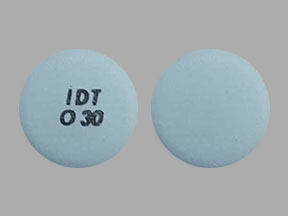RoxyBond Interactions
There are 626 drugs known to interact with RoxyBond (oxycodone), along with 16 disease interactions, and 1 alcohol/food interaction. Of the total drug interactions, 214 are major, 408 are moderate, and 4 are minor.
- View all 626 medications that may interact with RoxyBond
- View RoxyBond alcohol/food interactions (1)
- View RoxyBond disease interactions (16)
Most frequently checked interactions
View interaction reports for RoxyBond (oxycodone) and the medicines listed below.
- Abilify (aripiprazole)
- Adderall (amphetamine / dextroamphetamine)
- albuterol
- amitriptyline
- aspirin
- atorvastatin
- bupropion
- buspirone
- Butrans (buprenorphine)
- cyclobenzaprine
- famotidine
- gabapentin
- ibuprofen
- Keppra (levetiracetam)
- ketamine
- levothyroxine
- lidocaine / prilocaine topical
- Linzess (linaclotide)
- methocarbamol
- methotrexate
- metoprolol
- naproxen
- propranolol
- Protonix (pantoprazole)
- Restasis (cyclosporine ophthalmic)
- Seroquel XR (quetiapine)
- Strattera (atomoxetine)
- tizanidine
- topiramate
- Zyrtec (cetirizine)
RoxyBond alcohol/food interactions
There is 1 alcohol/food interaction with RoxyBond (oxycodone).
RoxyBond disease interactions
There are 16 disease interactions with RoxyBond (oxycodone) which include:
- impaired GI motility
- infectious diarrhea
- prematurity
- acute alcohol intoxication
- drug dependence
- hypotension
- intracranial pressure
- respiratory depression
- gastrointestinal obstruction
- adrenal insufficiency
- liver disease
- renal dysfunction
- seizure disorders
- urinary retention
- arrhythmias
- biliary tract disease
More about RoxyBond (oxycodone)
- RoxyBond consumer information
- Compare alternatives
- Pricing & coupons
- Drug images
- Latest FDA alerts (4)
- Side effects
- Dosage information
- During pregnancy
- FDA approval history
- Drug class: Opioids (narcotic analgesics)
- Breastfeeding
- En español
Related treatment guides
Drug Interaction Classification
| Highly clinically significant. Avoid combinations; the risk of the interaction outweighs the benefit. | |
| Moderately clinically significant. Usually avoid combinations; use it only under special circumstances. | |
| Minimally clinically significant. Minimize risk; assess risk and consider an alternative drug, take steps to circumvent the interaction risk and/or institute a monitoring plan. | |
| No interaction information available. |
See also:
Further information
Always consult your healthcare provider to ensure the information displayed on this page applies to your personal circumstances.


